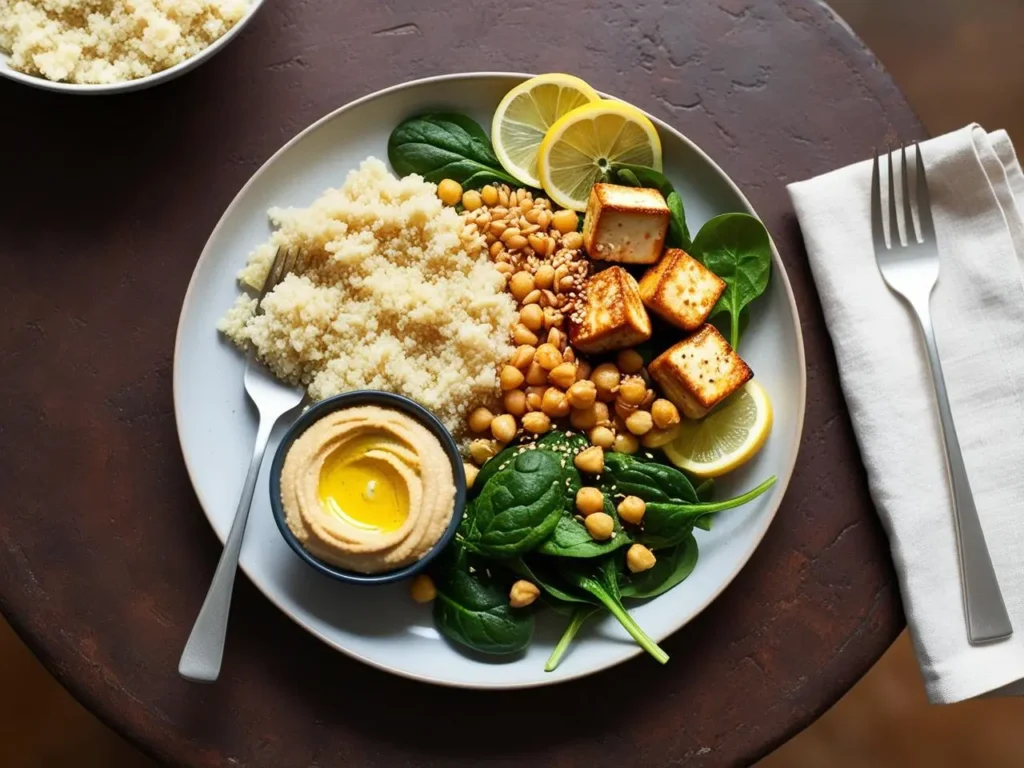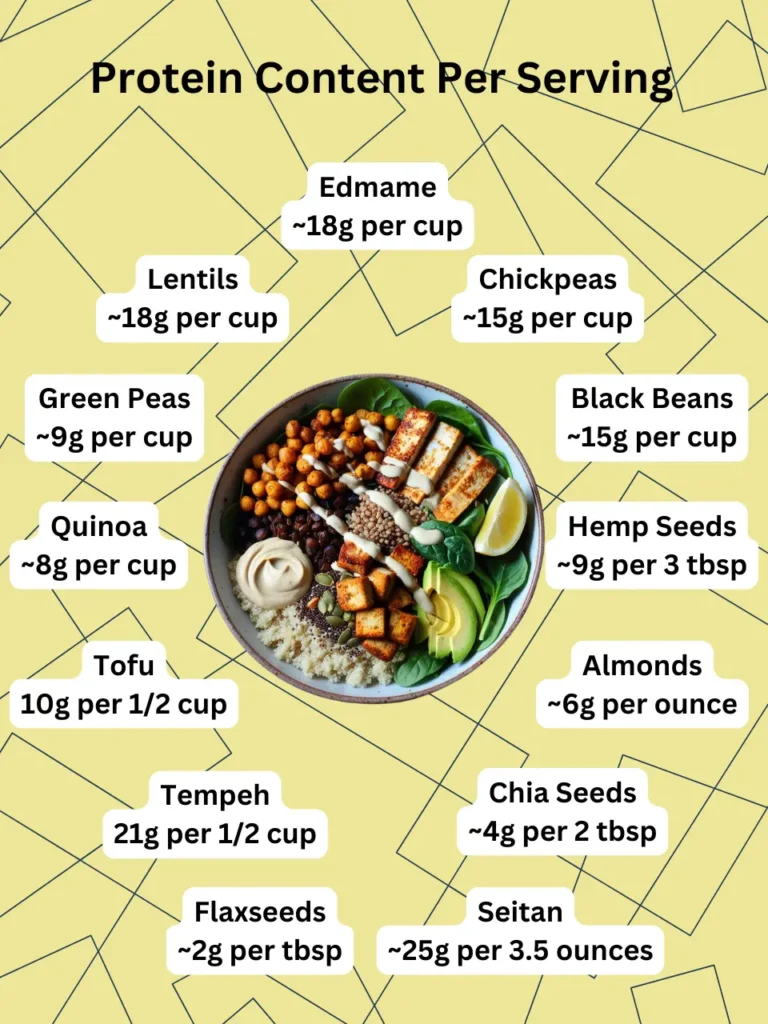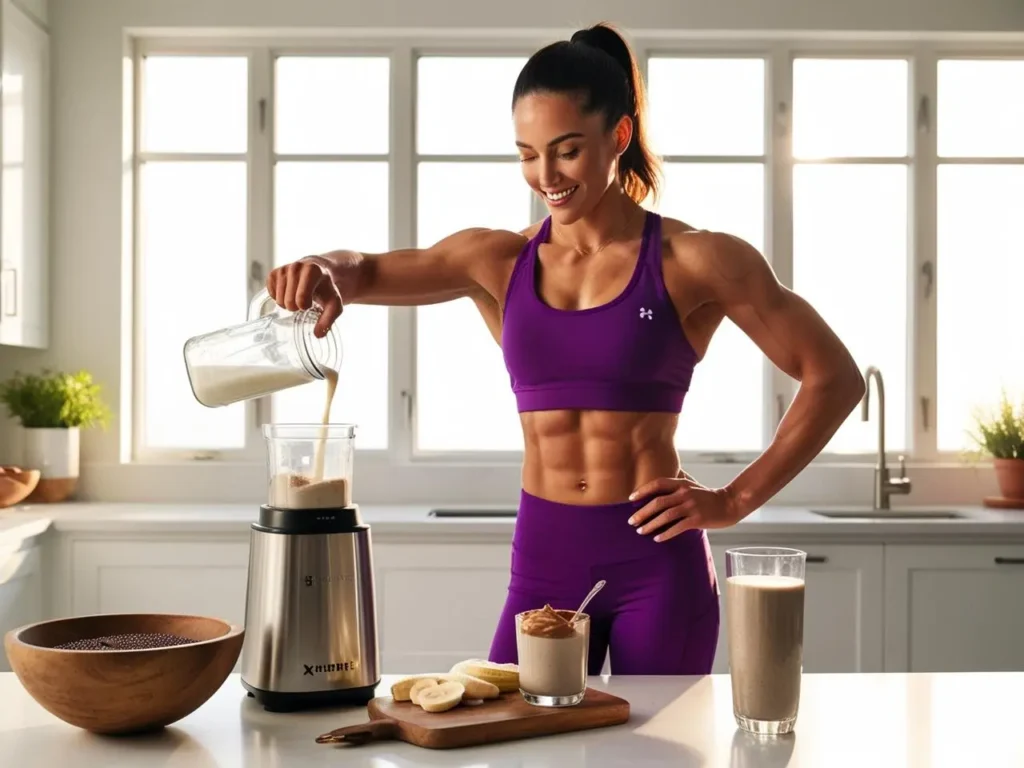So, you’re thinking about adding more plant-based protein sources to your diet. Maybe you’re going full vegan, maybe you’re just trying to cut back on meat, or maybe you just watched a documentary about how plants will turn you into a superhero. So, whatever the reason, you’re here, and that means you’re probably wondering:
- Can you actually get enough protein from plants?
- What are the best plant protein sources?
- Will I have to eat 200 bowls of spinach just to meet my protein needs?
Don’t worry. You’re not about to become Popeye’s long-lost cousin. Because, there are plenty of high-protein plant foods that are just as good—if not better—than their meaty counterparts.
In this guide, we’ll break down everything you need to know about protein-rich vegan foods, from the best sources to how they stack up nutritionally. And we’ll also throw in some pro tips on protein absorption and how to get the most out of your meals.
Let’s dive in.
Why Protein Matters (Even If You’re Not a Bodybuilder)
Before we start listing all the delicious plant-based diet protein sources, let’s talk about why you need protein in the first place.
Protein is basically your body’s construction crew. Which means, it builds and repairs tissues, makes enzymes, and even keeps your hair and nails looking fabulous. And so, if you don’t get enough protein, you might feel sluggish, struggle to build muscle, and—worst case scenario—start craving meat like a caveman.
Proteins help you:
- Build and repair muscle
- Keep your skin, hair, and nails looking good
- Stay full and satisfied after meals
- Keep your immune system strong
- Avoid feeling like a noodle after a workout
If you’ve ever been told that protein for vegans is a problem, don’t believe it. Because, you don’t need steak or chicken to get enough protein. You just need to know where to look.

1. The Power Players: High-Protein Plant Foods You Need in Your Life
Let’s start with the real MVPs—the best plant protein sources that pack the biggest punch. In fact, these foods are nutrient-dense, protein-packed, and perfect for both vegans and vegetarians.
1.1. Lentils (The Protein Overachiever)
If lentils had a resume, it would be stacked. They contain 18 grams of protein per cooked cup and come with a bonus: fiber, iron, and B vitamins.
- Why eat them? They’re cheap, cook quickly, and, most importantly, work in everything from soups to curries. Not to mention, they keep you full for longer.
- Best way to enjoy: Lentil soup, veggie burgers, or tossed into salads for extra plant-based protein benefits.
1.2. Chickpeas (A.K.A. The Hummus Hero)
Chickpeas, also known as garbanzo beans, provide 15 grams of protein per cooked cup and are loaded with fiber, magnesium, and iron.
- Why eat them? They keep you full and are ridiculously versatile. Plus, they are a great addition to almost any meal.
- Best way to enjoy: Roast them for a crunchy snack, blend them into hummus, or throw them in a wrap with veggies. Either way, you’re getting a healthy dose of protein.
1.3. Tofu, Tempeh & Seitan (The Meat-Free Protein Alternatives)
These soy-based protein-rich vegan foods are lifesavers for those craving a meaty texture.
- Tofu: 10 grams of protein per ½ cup (firm tofu)
- Tempeh: 21 grams per ½ cup (a fermented superfood!)
- Seitan: 25 grams per ½ cup (aka “wheat meat”)
- Why eat them? They’re high in protein, easy to cook, and best of all, they soak up flavors like a sponge. This means you can season them however you like.
- Best way to enjoy: Stir-fries, sandwiches, or grilled with BBQ sauce. For an extra kick, try marinating them before cooking.
1.4. Quinoa (The Overachiever Grain)
Technically a seed, quinoa has 8 grams of protein per cooked cup and contains all nine essential amino acids—making it one of the best complete protein sources.
- Why eat it? It’s naturally gluten-free and packed with fiber and iron. Even better, it cooks quickly and pairs well with a variety of dishes. Plus, it’s an excellent alternative to rice.
- Best way to enjoy: Swap it for rice, use it in salads, or make quinoa porridge for a protein-rich breakfast. And you can even mix it with lentils for an extra protein punch.
2. Nuts & Seeds: Tiny But Mighty Protein Powerhouses
Nuts and seeds aren’t just snacks—they’re nutrient bombs packed with protein, healthy fats, and essential minerals. Not to mention, they’re incredibly easy to add to your daily meals.
2.1. Almonds & Peanuts (Your Favorite Gym Buddies)
- Almonds: 7 grams of protein per ¼ cup
- Peanuts: 9 grams per ¼ cup (or 4g per tablespoon of peanut butter!)
Both are great for protein for vegans, and, more importantly, they make an easy, on-the-go snack.
- Best way to enjoy: Eat them plain, blend them into nut butter, or sprinkle them on smoothie bowls. Either way, you’ll be getting a delicious protein boost.
2.2. Chia Seeds & Flaxseeds (The Omega-3 Kings)
- Chia seeds: 5 grams per 2 tablespoons
- Flaxseeds: 4 grams per 2 tablespoons
These tiny seeds are high in fiber, omega-3s, and antioxidants. Additionally, they help support digestion and overall heart health.
- Best way to enjoy: Add to smoothies, oatmeal, or make a chia seed pudding. And, they help support digestion and overall heart health.
2.3. Pumpkin Seeds & Sunflower Seeds (Protein with a Crunch)
- Pumpkin seeds: 7 grams per ounce
- Sunflower seeds: 6 grams per ounce
- Best way to enjoy: Sprinkle on salads, yogurt, or eat them straight out of the bag. Not only do they add crunch, but they also bring a burst of flavor.

3. Plant-Based Protein for Athletes & Fitness Enthusiasts
If you’re hitting the gym and wondering if vegan bodybuilding protein is enough, the answer is YES. In fact, with the right choices, you can build muscle just as effectively as non-vegans.
3.1. Vegan Protein Powders (For That Extra Boost)
- Pea protein: 20-25g per serving
- Hemp protein: 12-15g per serving
- Rice protein: 15-20g per serving
Why use them? They’re convenient, easy to digest, and perfect for shakes. And even better, they help bridge any protein gaps in your diet.
- Best way to enjoy: Blend with almond milk, banana, and peanut butter for a high-protein plant food smoothie. Or, if you’re feeling creative, mix it into pancake batter for a protein-packed breakfast.
3.2. Protein Combining: Mixing Foods for a Complete Protein
Some plant foods lack certain amino acids, but combining them fixes that.
- Beans + Rice = Complete protein
- Peanut Butter + Whole Wheat Bread = Classic combo
- Lentils + Quinoa = Ultimate healthy plant protein option

4. How to Get Enough Protein on a Plant-Based Diet (Without Overthinking It)
You don’t need to track every gram of protein if you eat a variety of these foods. Instead, focus on adding a mix of these ingredients to your daily meals. That way, you’ll naturally get enough protein without stress.
4.1. Breakfast Ideas
- Chia seed pudding with almond butter
- Scrambled tofu with veggies
- Overnight oats with peanut butter
4.2. Lunch & Dinner Ideas
- Quinoa and black bean salad
- Lentil soup with whole-grain bread
- Chickpea and spinach curry
4.3. Snack Ideas
- Roasted chickpeas
- Almonds and dark chocolate
- Protein smoothie with plant-based protein powder
How to Optimize Protein Absorption
Not all proteins are absorbed the same way. Here’s how to make sure your body is making the most of your meat-free protein alternatives:
- Combine Foods for a Complete Protein
- Pairing grains and legumes (like rice and beans) ensures you get all nine essential amino acids.
- Eat Enough Calories
- If you’re not eating enough overall, your body won’t efficiently use protein.
- Include Vitamin C with Iron-Rich Foods
- Helps with absorption. Think lentils + bell peppers or spinach + lemon juice.
Protein for Fitness & Muscle Growth
If you’re worried about vegan bodybuilding protein, don’t be. Many top athletes thrive on a plant-based diet protein plan. Here’s how to do it right:
- Eat a variety of protein sources to cover all essential amino acids.
- Increase your calorie intake if you’re trying to gain muscle.
- Use plant-based protein powders (pea, rice, or hemp) if needed.
Easy Vegan Meal Ideas with Protein
Need inspiration? Try these simple, high-protein plant meals:
- Breakfast: Oatmeal with chia seeds, almond butter, and hemp hearts.
- Lunch: Quinoa salad with chickpeas, avocado, and tahini dressing.
- Dinner: Stir-fried tofu with broccoli and brown rice.
- Snack: Roasted edamame or hummus with whole-grain crackers.
Final Thoughts: Why Plant-Based Protein Sources Are the Future
Eating more plant-based diet protein isn’t just good for your health—it’s also great for the planet. Not only does it reduce your environmental footprint, but it also helps improve overall well-being.
Whether you’re looking for meat-free protein alternatives, trying to bulk up with vegan bodybuilding protein, or just want healthy plant protein options, you’ve got plenty of choices. Ultimately, the key is to find what works best for you and enjoy the journey.
Feeling snacky for some healthy food inspo? Check out our Food & Nutrition page—it’s loaded with tips, tricks, and mouthwatering ideas for every craving and diet!

